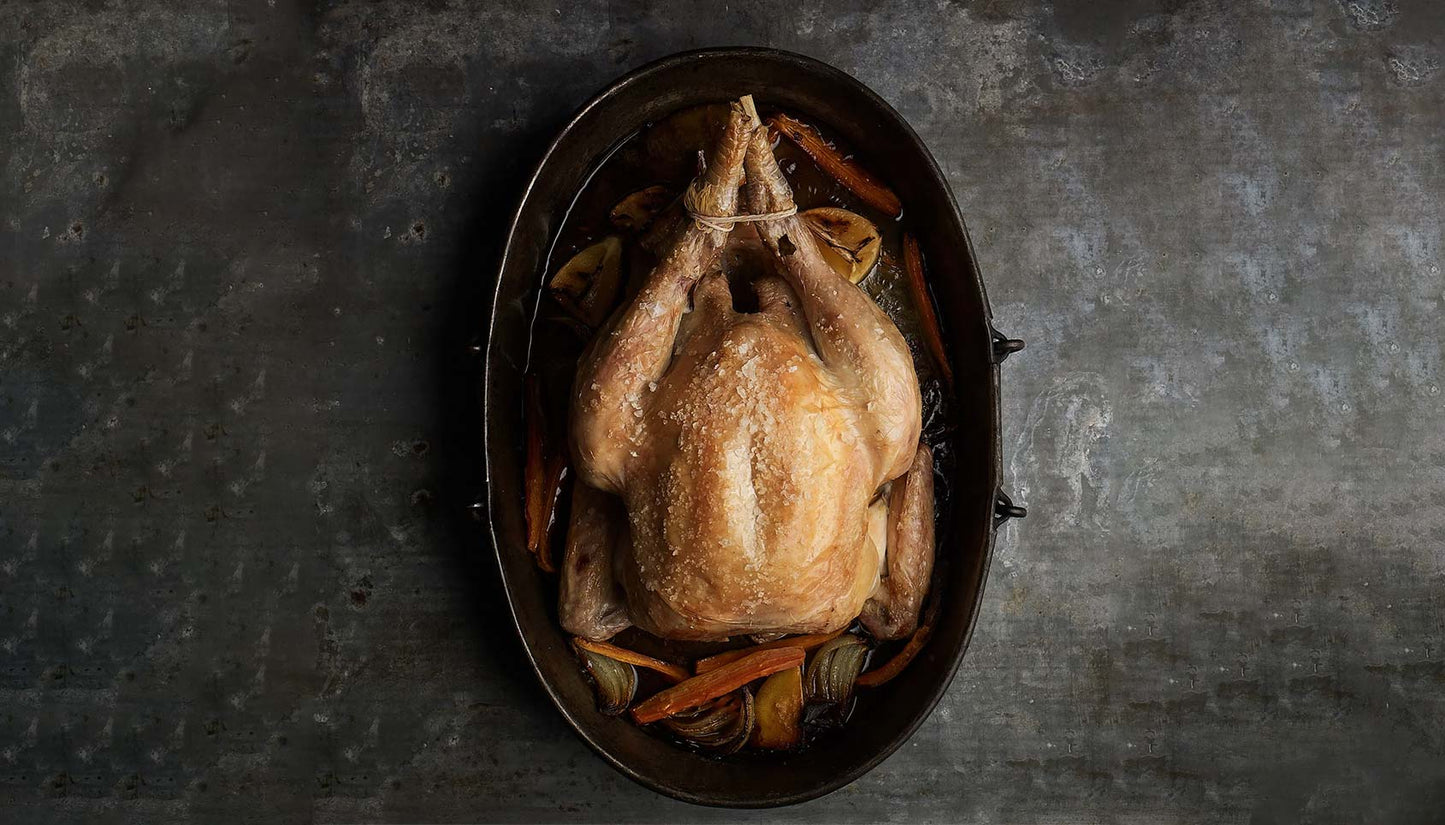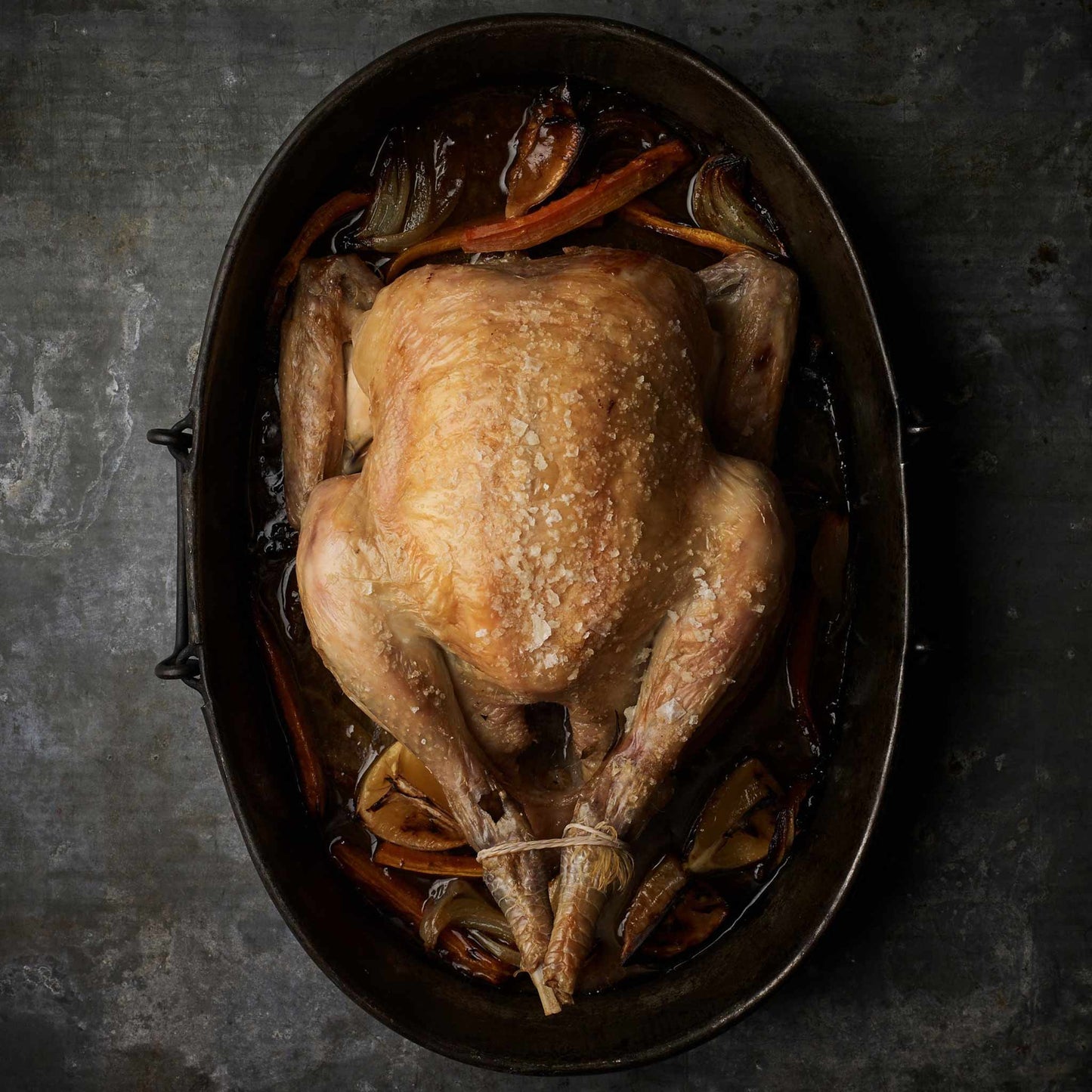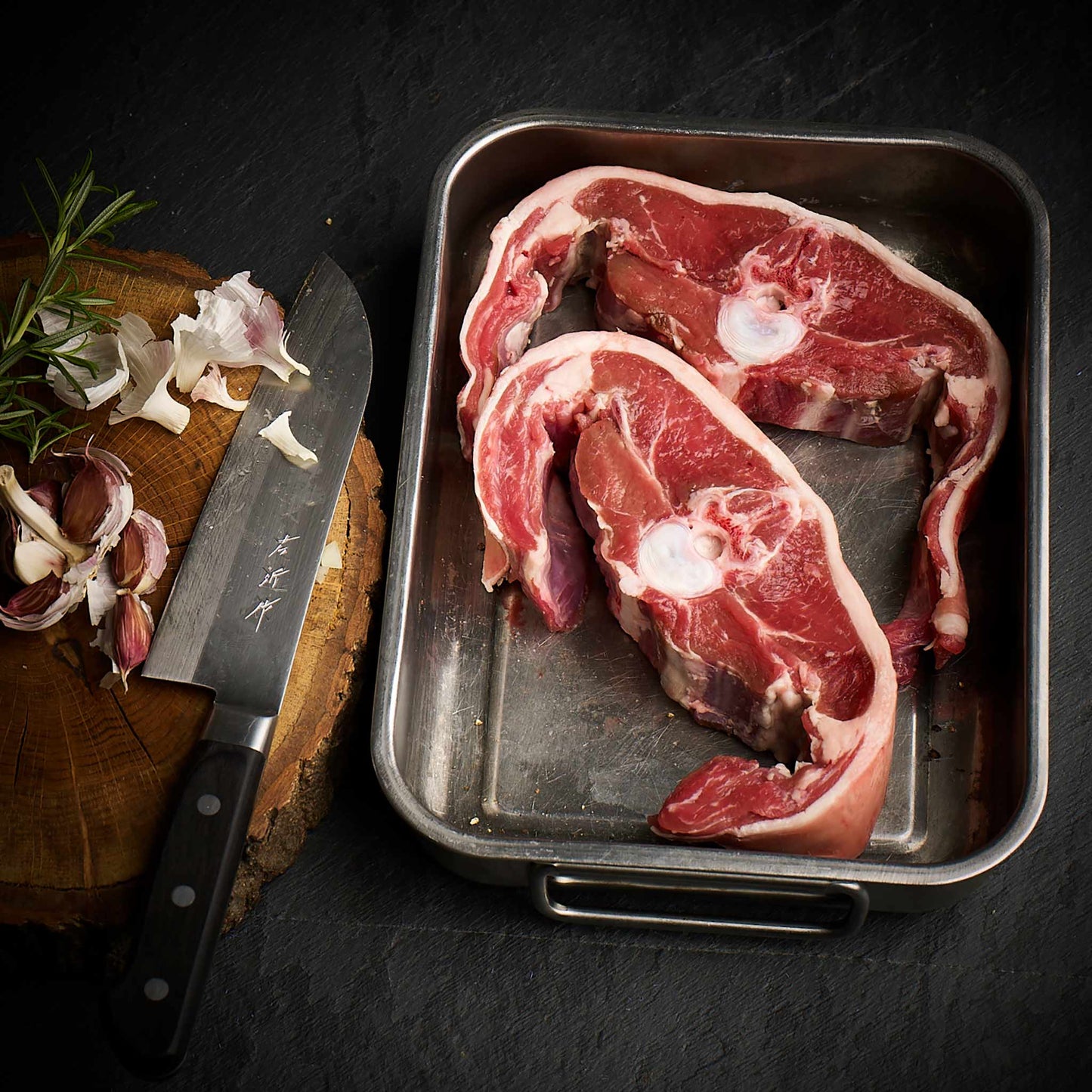We source our chicken from one farm in Leicestershire. The farm is Pasture for Life certified and rears truly free range, outdoor birds.

Most of the meats we sell and eat are muscles. They're the parts of an animal that are made from proteins and fats, and therefore give our bodies those nutrients when we eat them.
Our producers farm using methods that regenerate the land, meaning animals don't simply exist on the land but actually interact with and move over it, walking, eating, scratching and fertilising as they go.
As with our own bodies, when animals’ muscles are used they get stronger and fitter, and therefore more conditioned.
Muscles that are used need cooking differently
Weight-bearing muscles and those that are constantly used contain higher amounts of collagen than muscles that aren't used for support or exercised frequently. Cows and pigs have higher amounts of collagen in the legs, chest and rump, and these cuts therefore suit longer and lower cooking to render the collagen. When collagen melts, it turns into gelatin, a rich liquid that gives meat a lot of flavour as well as a silky texture. However, in order for collagen to truly liquify, it must not only be heated but cooked at low temperatures for a long time.
The animals we sell as food have also lived a lot longer than their factory-farmed counterparts. A supermarket chicken that has been factory farmed could be slaughtered at just 42 days old. In that time its body will have gone from a few grams to a few kilos while barely moving – no wonder the meat is soft!
Our soy-free chicken is very different. The chickens live on natural pasture and get somewhere between 25% and 40% of their diet from the land, including pasture, bugs, worms and other invertebrates. The rest of their nutrition comes from UK-sourced grains and cold-pressed seed meal. They grow slowly for 80-100 days and in the winter, when pasture is scarce, they can be kept for longer than 100 days.
If you’re a new customer and you’re used to cooking more conventionally produced animals, you might find our meat a little tough unless you adjust your cooking times and methods.
We recommend cooking lower and longer
Instructions to roast a conventionally grown chicken usually suggest 180ºC fan for 25 mins per 500g, plus an extra 25 mins – meaning a 1.5kg chicken would get 100 minutes or 1 hour 40 mins (25x3 + 25).
We recommend our chickens be cooked at a lower heat of 150ºC or less for a little longer. Go for 45 minutes per 500g, then remove from the oven, turn the heat up to 250ºC and wait until the oven is up to temperature before giving it 10 minutes in the heat to crisp up the skin to a beautiful golden brown.

Let's resurrect the chicken brick!
The best option in our opinion is to use a chicken brick – a terracotta pot with the lid soaked in water before use.

Pictured above, Chicken Brick at The Conran Shop, £70, available> here (no affiliation).
Anyone alive in the 70s or before will probably remember these and there might be many lurking in the backs of kitchen cupboards, unloved for decades.
This method of cooking is nothing new. The Romans used a variation on this type of terracotta oven, but it was Sir Terence Conran who popularised it in the UK by introducing it to his store on the Kings Road, London in 1964.
Where did chicken bricks go and why do you need one?
Modern, fast-growing chickens have softer, spongier muscles that have had little use. They can be cooked adequately simply by placing in a hot oven for the prescribed time, but the meat will likely be dry due to the lack of natural fat in the bird. The meat will lack taste and have a texture more like cardboard.
We always recommend cooking our chicken longer and lower than the ones you might be used to from conventional farming methods, and a chicken brick is a great way to do this. It will absorb flavours and turn darker in colour with use over time, so just a rinse in hot water rather than scrubbing with detergent is enough and keeps it improving with time.
When you’re cooking in a chicken brick or indeed in an oven pot or dutch oven, the heat is evenly distributed and the steam is trapped in, meaning it’s almost impossible to burn. The heat remains lower than the temperature that causes fat to burn and when cooked the meat will easily separate from the bones.
How to adjust cooking times for wings and drumsticks
We advise longer cooking times for our chicken portions as well. If you look up a recipe for drumsticks or wings you’ll see something along the lines of 30-40 minutes at 180-200ºC. We recommend 60-70 minutes at 150-170ºC for tender, succulent and yet still deliciously crispy portions.
Our soy-free, pasture-raised chicken is succulent, richly flavoured and more moist and fatty than its contemporaries – more like chicken used to be in the 1970s.




